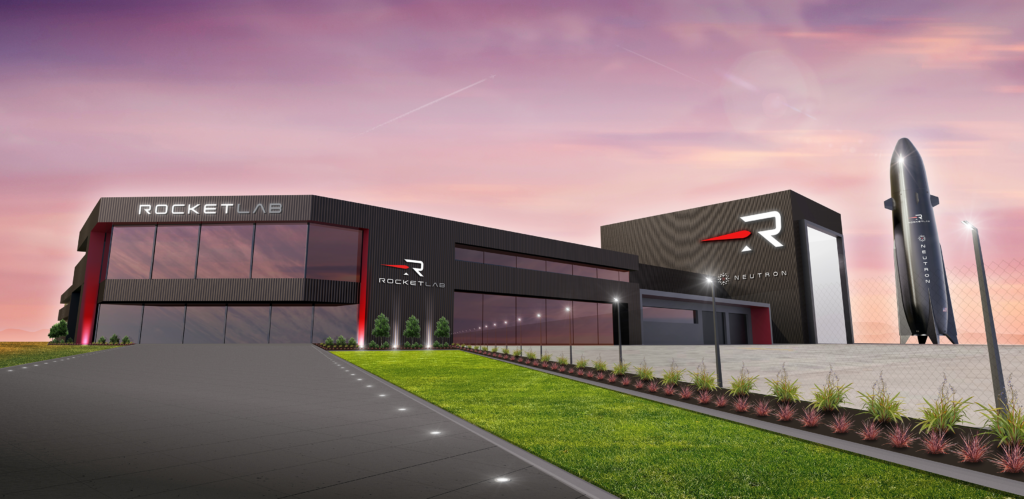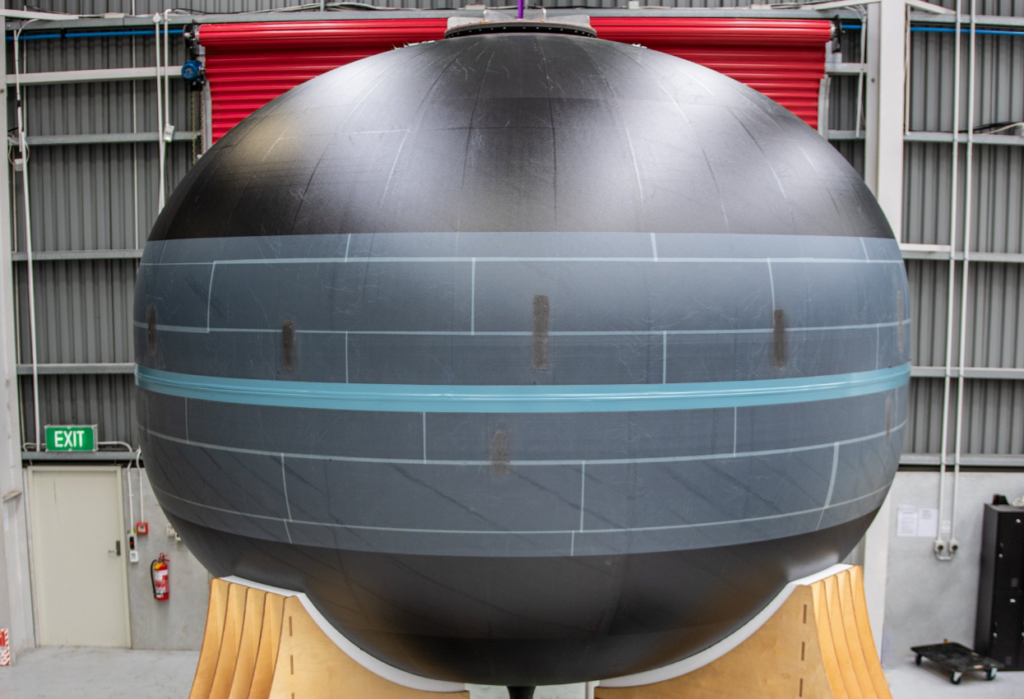
Rocket Lab Is Getting Closer To The First Launch of Neutron
Back in early 2021, Rocket Lab made a big announcement with the reveal of a new rocket meant to change how the company accessed space. This rocket would be much bigger than Electron, nearly fully reusable, and target a different market within the industry. Since then, we have been receiving more and more updates on the project with work beginning on physical test models.
Just days ago, the company revealed a practically complete Neutron tank dome. For this next generation launch vehicle, Rocket Lab is using a new manufacturing approach and materials meant to enhance what its capable of. With a maiden launch date scheduled not far away in 2024, the company is moving at an impressive pace to try and make that goal a reality.
Rocket Lab as a company has always had very ambitious goals for the future. The Neutron rocket and everything that comes with it is no exception. Not only is Rocket Lab working on a new rocket, but an immense amount of infrastructure in different parts of the country to facilitate its plans. Here I will go more in-depth into new updates from the company, Neutron’s changes, what to expect in the coming months, and more.
Full Neutron Tank Dome

In December of last year, Rocket Lab CEO Peter Beck tweeted saying, “Neutron tank dome beside an Electron tank dome with a Buzz Lightyear for scale.” This included an image of exactly that which showcased how big Neutron is in comparison to Electron. This update was quite a big deal not only because of the size of the tank but it highlighted that Rocket Lab was already busy working on physical Neutron components and structures. Only two days ago on the 5th however, Rocket Lab tweeted mentioning, “We solved small launch with Electron. Now we’re unlocking a new category with Neutron.” This included an image of a full Neutron tank dome with a few people for scale standing in front of it. A full Neutron tank dome is significant and is one of the first steps in constructing a full Neutron test article for various experiments. With Rocket Lab working toward an initial test flight next year, a lot of equally important tests will need to be completed prior. Various tanking and pressure tests for example could be set to happen sooner than we think.
In addition to this, a few months ago in January Peter Beck tweeted again pointing out, “Neutron 1st stage tank halves in progress. Love it when a plan comes together.” Once again the image showed a fully up and running producing complex with massive Neutron tank molds in the background. Not to mention the tank halves coming together already. What all this highlights is that the physical development and manufacturing of Neutron is very much underway.
While the rocket itself is obviously important, Rocket Lab has been putting just as much if not more effort into all the infrastructure to support Neutron’s future. The Neutron Production Complex and launch pad for example will be located at the NASA Wallops Flight Facility and Mid-Atlantic Regional Spaceport on Virginia’s Eastern Shore. During Rocket Lab’s investor day presentation late last year, they expressed that concrete had been poured for the massive facility and launch pads with the goal of standing up the first Neutron Production Complex building before the end of the year. Just a few weeks into 2023 they basically met that goal by completing the first building for the Neutron production complex at NASA Wallops. Inside this facility, Neutron’s 7-meter-wide reusable first stage began to take shape. This site also serves as a development area for tank testing, enabling rapid build & test iteration.
In total, the Neutron Production Complex will be home to a rocket production, assembly, and integration facility, as well as a dedicated launch pad for the Neutron rocket located on the southern end of Wallops Island. The estimated 250,000 square foot state-of-the-art complex is being constructed on a 28-acre site adjacent to the Wallops Island Flight Facility and will include a Launch Control Center, Rocket Lab’s fifth global operations center for launch activities and on-orbit operations. In order to support rapid production of the Neutron rocket, current plans for the complex include automated fiber placement robotic production systems capable of laying up meters of Neutron’s new, specially formulated carbon composite structures in minutes. As a reusable rocket, Neutron is designed to land back on the Launch Complex 3 pad after a mission and from there it would be returned to the production complex for refurbishment and re-flight.
Neutron’s Changes

As with any rocket, plans change as the company begins working out actual problems and hardware. Initially, Rocket Lab came up with some general ideas and designs for a next generation rocket, however, they soon realized that adjustments would be necessary to get the most efficient and capable system. A lot of these changes were revealed during the investor day presentation.
The fairings for example, now only use two sections rather than four, while keeping the same hungry hippo closing pattern but also simplifying the overall design. Moving on, instead of just 7 Archimedes engines on the first stage, there will now be 9, for a total of 10 engines on the rocket including the second stage. They also changed the engines from a gas generator cycle to an oxidizer rich closed cycle because as they worked through the content of operations and did all the power balances, they found turbine temperatures that were too high, a low amount of margin, and the need for a lot of compromises. All of which are important changes that Rocket Lab is confident will improve the design. It’s also important to point out that changes are much easier to make at the very start of development rather than years into a certain program.
At its core, Neutron is Rocket Lab’s medium-lift, reusable launch vehicle in development. Designed to deliver reliable and cost-effective launch for payloads to low Earth orbit and beyond. With a large seven meter fairing and a payload lift capacity of 13 tonnes in a downrange landing configuration, Neutron is being designed for both constellation deployment and large single spacecraft missions. Focusing on the payload capacity, Neutron can launch between 8 and 15 tons depending on the mission profile. For example, 8 tons to LEO when Neutron returns to the pad, 13 tons when Neutron lands down range, and 15 tons when expendable. Most of which has to do with the unique and somewhat unconventional design of this rocket.
The first stage has a tapered profile and aerodynamic control surfaces, including canards and landing legs that act as rear-lifting surfaces. This allows the first stage to glide back to Earth for landing, reducing the aerothermal load experienced by modern re-entry boosters. In terms of the second stage, is designed to maximize mass-to-orbit capability, orbital insertion accuracy, and performance for complex payload deployments. At the same time, trying to provide an easily accessible and condensed mounting location for avionics hardware, aerodynamic control devices, and fluids lines. It also minimizes the requirement for the second stage to withstand the external launch environment. If successful, Neutron could change how Rocket Lab accesses space and even shift the company toward human flights if they see fit. As we know, back during the investor presentation they hinted at human rated Neutron rockets. At the time Peter Beck made it clear that this was not an announcement but rather the fact that the vehicle is designed to be human ratable. However, as of right now, they don’t have any programs working on Neutron capsules, but they are looking into it.
In reality, before they even think about putting humans on Neutron, they need to get it off the ground first. The Archimedes engine responsible for that task has arguably been the busiest in the past couple of months. Back on November 4th, Rocket Lab kicked off operations for testing the Archimedes engine with a ribbon cutting ceremony at NASA’s historic Stennis Space Center in Mississippi. The Archimedes Test Complex will be home to engine testing for the 165,000 lbf engines to be used on Rocket Lab’s reusable Neutron rocket. The site is located across a 1 million square foot area at the Stennis Space Center’s A Test Complex and includes the use and development of existing infrastructure of the A-3 Test Stand to develop and test Neutron’s Archimedes engines.
By now, Rocket Lab has already tested Archimedes hardware at the site. On January 9th they tweeted saying, “We’ve completed a big milestone in the development of Archimedes, our new engine for Neutron, by breathing fire at @NASAStennis testing engine ignition on dev hardware. Up next: hot firing hardware with full propellant flow rates to verify injector performance.” Based on the date of this update and progress from the company, we can expect another update not long from now on additional engine testing and results. In the past, Peter Beck explained that they are trying to make the most reliable and reusable engine which is the reason for the slightly lower isp, however still impressive. He stressed that this engine is going to be reused again and again and the less stress it goes through the better.
Conclusion
Rocket Lab is all hands on deck with Neutron production and development. It seems like each month we receive a new update on physical Neturon construction and infrastructure updates. With a maiden flight scheduled to happen next year, they will need to continue working at this impressive pace. We will have to wait and see how it progresses and the impact it has on the space industry.
